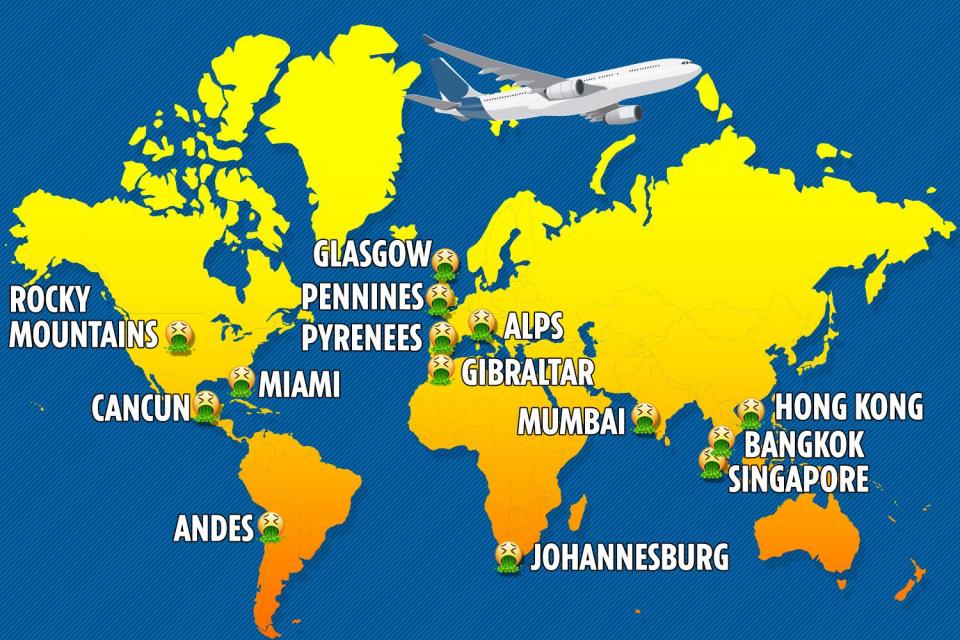
I’m far from a nervous flyer. In fact, I low key live for the window seat plus those gross plane meals that somehow taste really good 40000 feet in the air, and a bunch of terrible movies that will somehow still make me cry at the same time I’m mocking them. But even I have limits, and those limits have been tested by some serious turbulence over the years. So I can only imagine what it feels like for you nervous flyers to hit a rough patch in the sky.
Luckily for you, pilot and senior advisor in the flight safety department of the British Airline Pilots Association, Captain Stuart Clarke spoke to The Sun about the places which are more likely to hit turbulence, which they kindly turned into a map of sorts.
Does this mean you can avoid all turbulence? Not unless you stop flying or somehow gain control of flight paths. But it does mean you can brace yourself.

“When you cross the equator, there’s a belt of weather called the inter-tropical convergence zone. It moves north and south with the seasons. That series of storms extends right around the world on the equator line.”
“The weather and the resulting turbulence is a result of hot weather and the coming together of the winds from the Northern and Southern Hemispheres.”
Oh also mountain ranges, they’ll probably get you, but the intensity can vary day to day.
“Further up at 10,000 foot-high mountain ranges, you’re much more likely to have strong winds of 50 to 100 miles per hour,” explains Clarke, “In very strong winds, a pilot will try and add on some extra height to cross mountains such as the Alps. The sort of turbulence caused by terrain can occur anywhere there are mountains (or even hills) and strong winds.”
So yeah, a little hard to get to the other side of the world without hitting a bump or two. Particularly if you’re flying to Singapore, Miami, Cancun, Bangkok, Johannesburg, Hong Kong and Mumbai airports, which Clarke says are often the worst for turbulence.
Is there any way for pilots to avoid the wild ride? Clarke says they’ll try and fly under or over the problem area, but the success of that maneuver is really “at the mercy of the jet stream and its position“.








